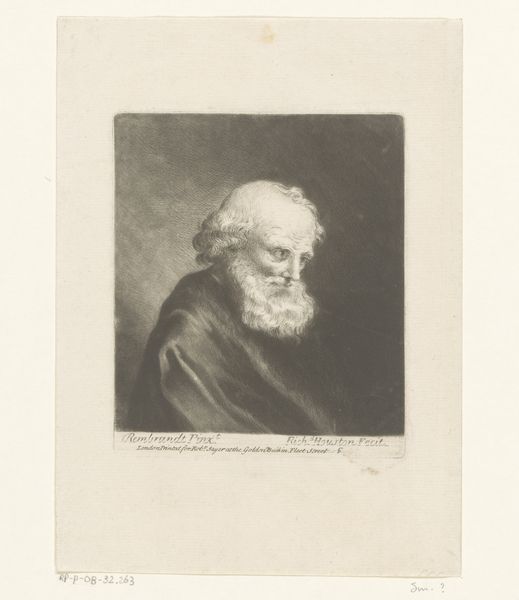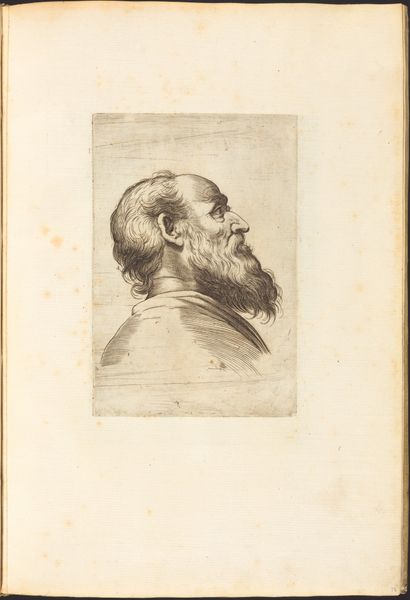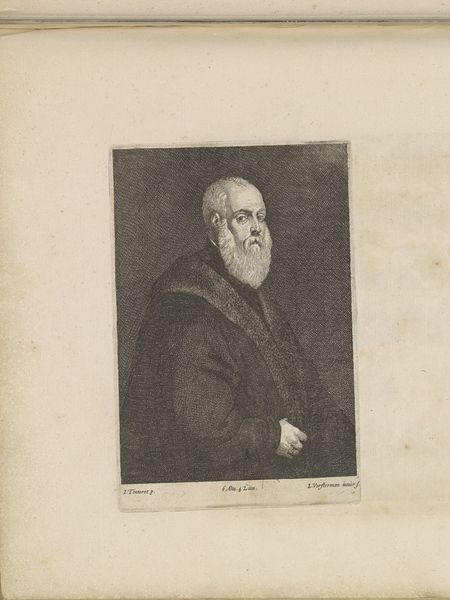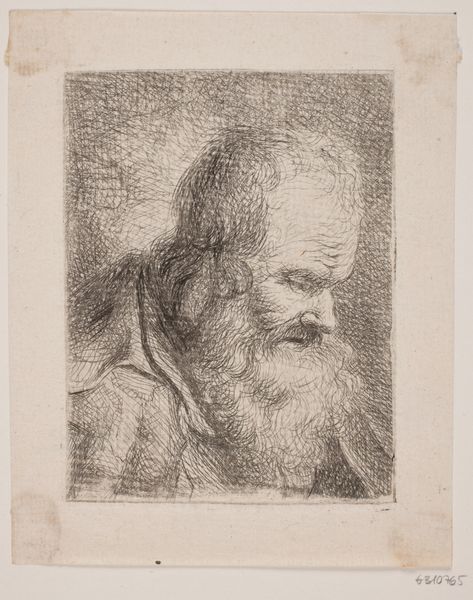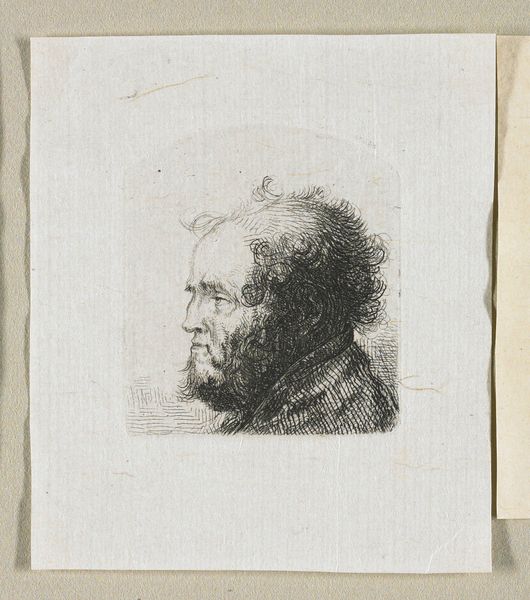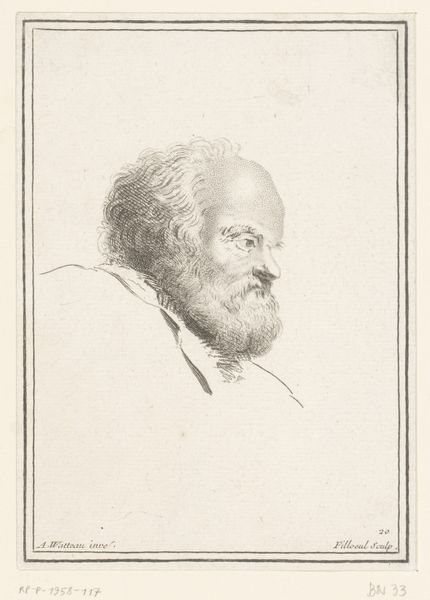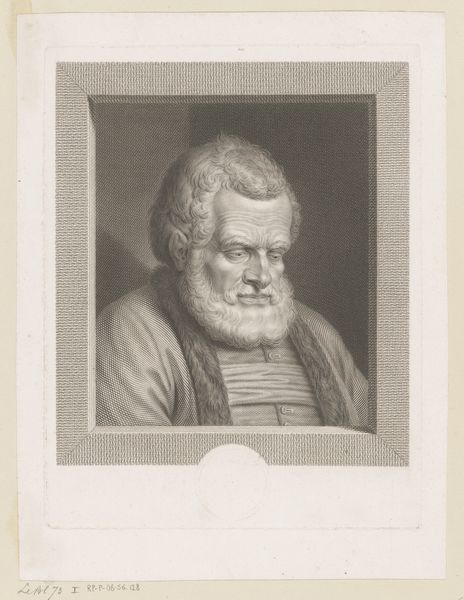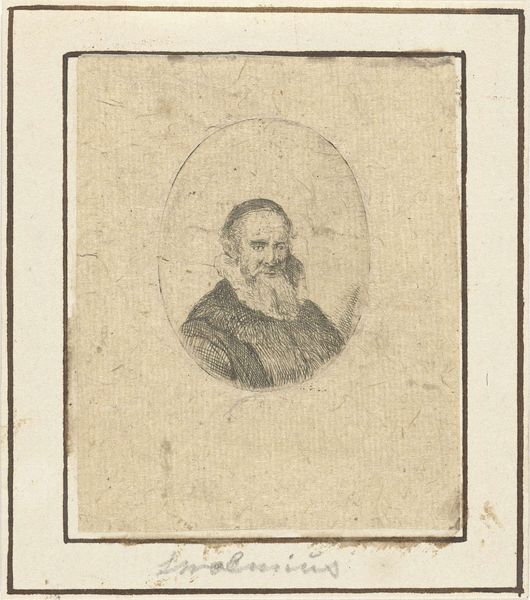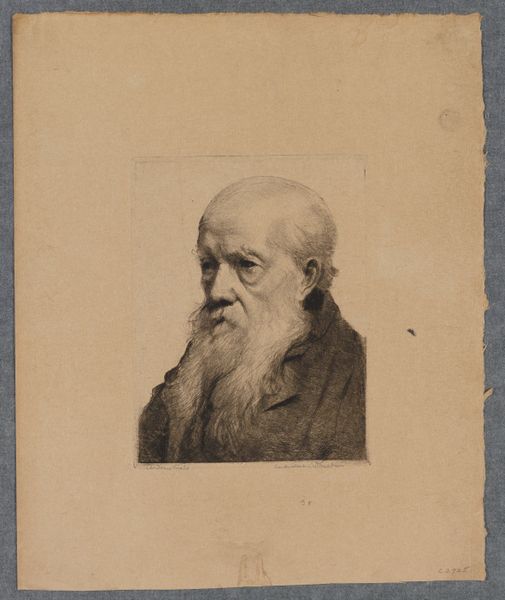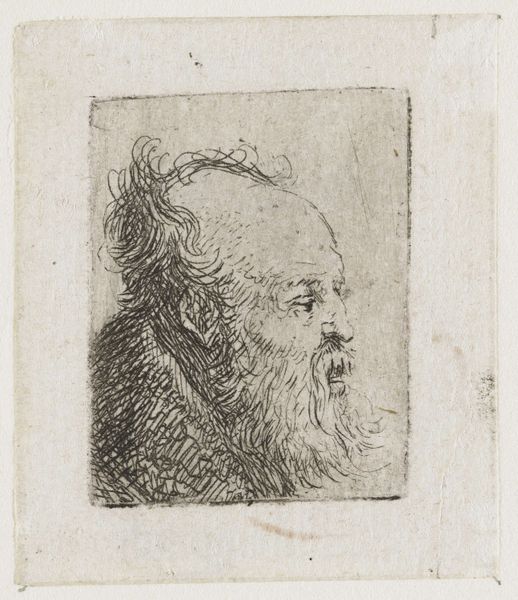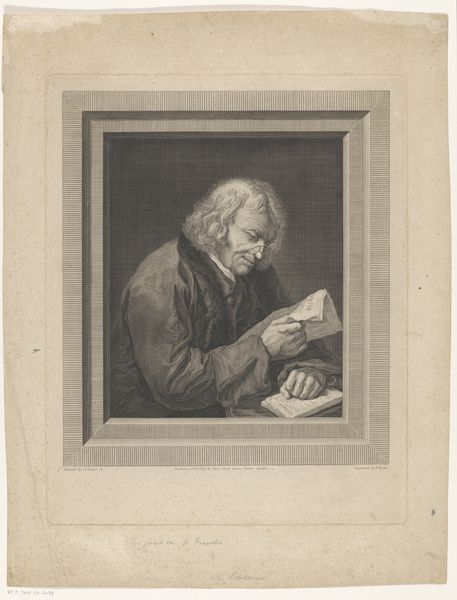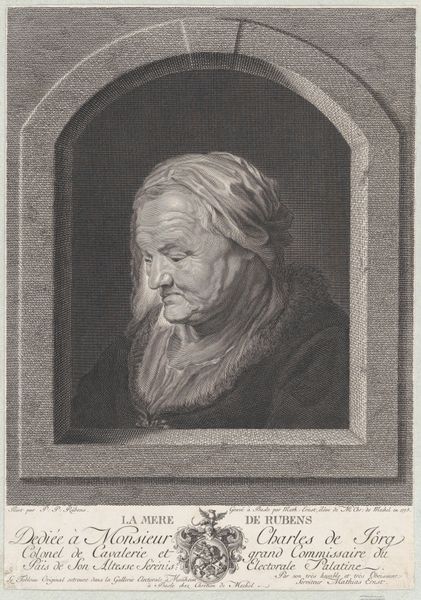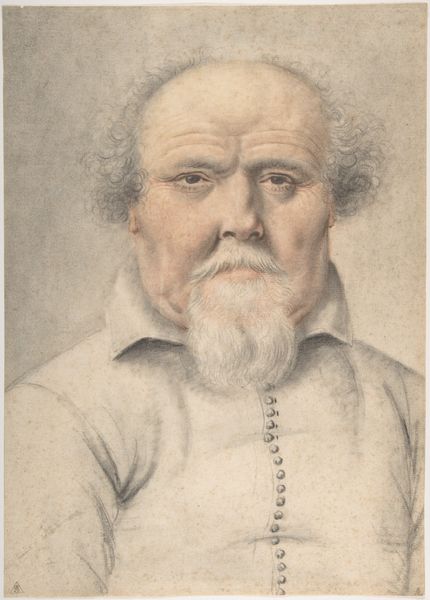
drawing, print, paper, ink, pen, engraving
#
portrait
#
drawing
# print
#
paper
#
ink
#
line
#
pen
#
history-painting
#
academic-art
#
engraving
#
realism
Dimensions: 102 × 83 mm
Copyright: Public Domain
Editor: Here we have Samuel Shelley’s “Bust of Old Man,” made between 1776 and 1808. It’s a small print, an engraving in ink on paper, with delicate lines forming the face and clothing of an elderly man. What can you tell us about this compelling portrait? Curator: This piece invites us to consider representation, particularly of aging and masculinity, within the context of the late 18th century. How do you see Shelley engaging with societal expectations around portraying older men? Is he idealizing or perhaps subverting those expectations? Editor: I hadn’t thought of it that way. I guess I see a kind of vulnerability, maybe even a weariness in his face that feels pretty real. Curator: Exactly! This raises the question of the relationship between art and reality, and whether Shelley's "realism" serves as a form of social commentary, implicitly questioning the privileging of youth and strength in that era’s artistic and cultural values. Does he challenge power dynamics by giving visibility to a demographic often rendered invisible? Editor: It's almost like the artist is making a political statement simply by depicting the subject honestly. Curator: Precisely. Think about how this resonates with feminist art theory, challenging the male gaze by offering an alternative perspective on male subjects themselves. Where do you think Shelley fits within the landscape of academic art, particularly given these nuanced layers of potential subversion? Editor: I always thought of academic art as reinforcing the status quo. Curator: And this piece makes you think otherwise? That's the power of engaging with art critically, right? Editor: Absolutely. This has completely changed how I see portraits from this period! Curator: Indeed, and it underlines art's capacity to instigate profound conversations on crucial issues, prompting us to reassess accepted narratives and assumptions.
Comments
No comments
Be the first to comment and join the conversation on the ultimate creative platform.

